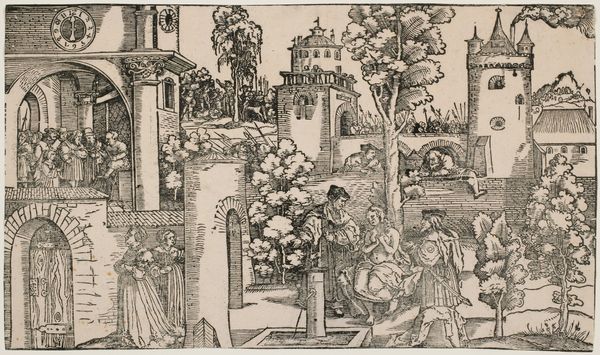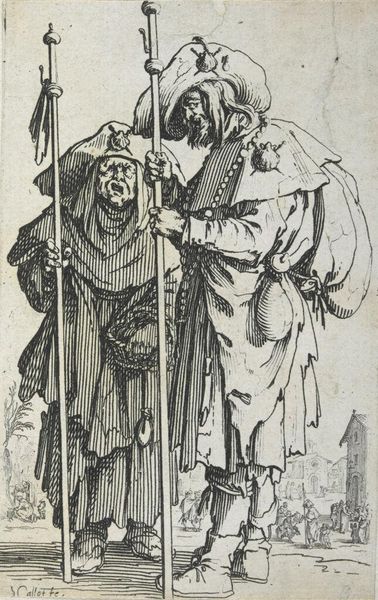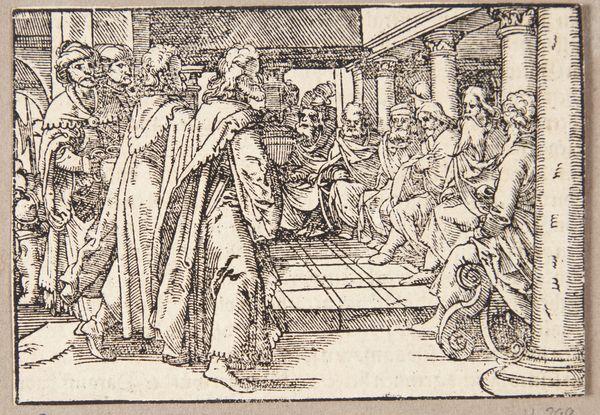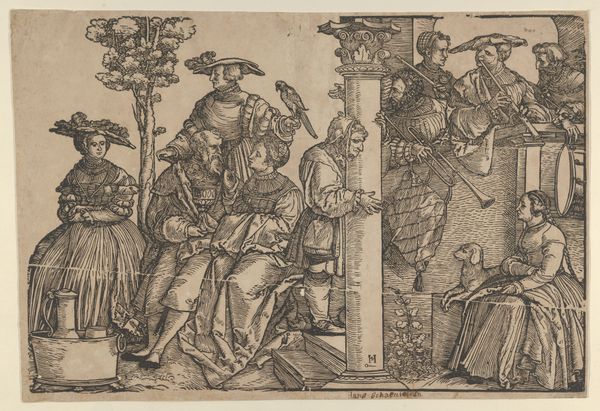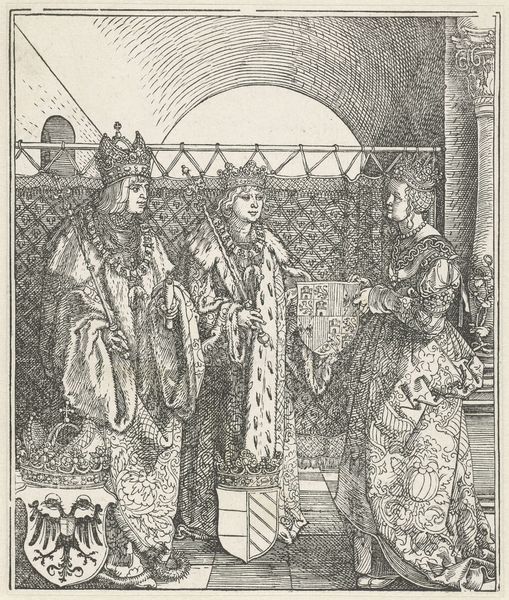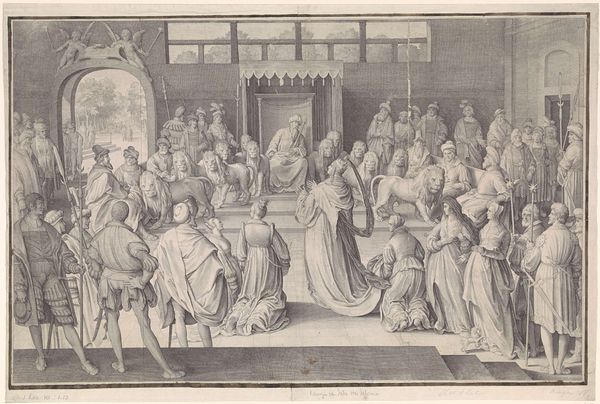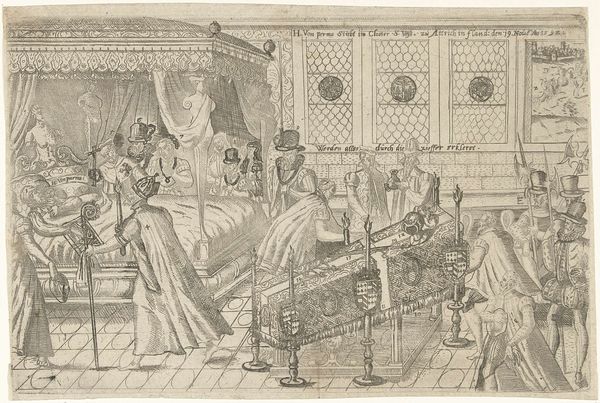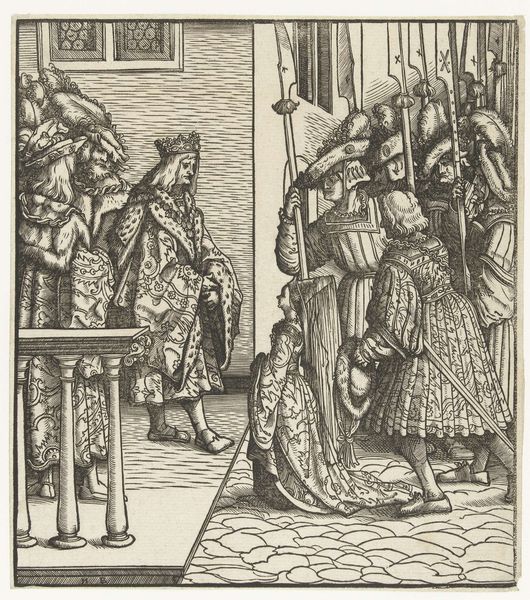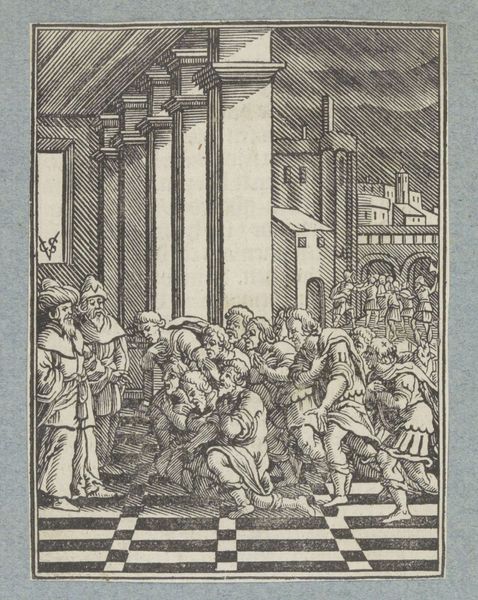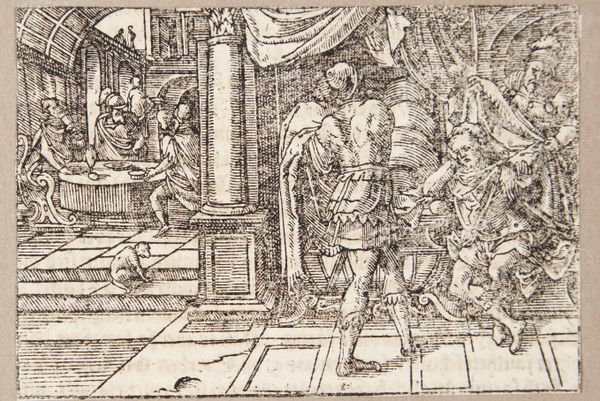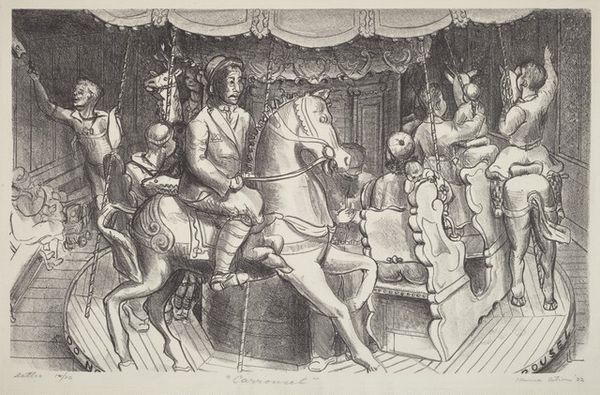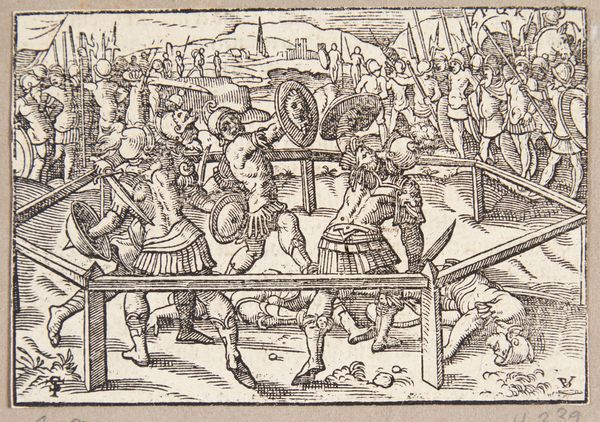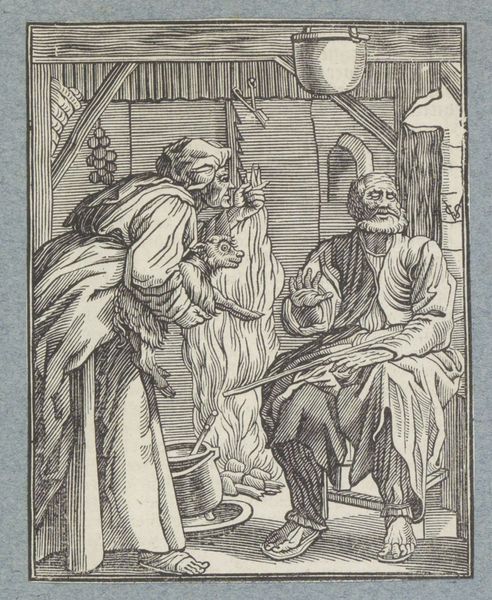
Tokugawa Tsunayoshi Visiting Nikkō Shrine on the Thirtieth Anniversary of Iemitsu’s Death 1875
0:00
0:00
Copyright: Public Domain: Artvee
Curator: Looking at this print, it immediately strikes me how much importance is attached to ritual and spectacle here. All the pomp and circumstance seems designed to both impress and instill a sense of awe. What’s your initial take, Editor? Editor: Well, my first thought is... organised chaos! I mean, look at this scene – it's bustling, isn't it? The colors, the characters, the text hovering at the side like it’s all about to topple over... What we're looking at here is a woodblock print entitled "Tokugawa Tsunayoshi Visiting Nikkō Shrine on the Thirtieth Anniversary of Iemitsu’s Death" by Tsukioka Yoshitoshi, created in 1875. It's an incredible example of Ukiyo-e art. Curator: Indeed. Ukiyo-e, "pictures of the floating world", often depicted scenes from everyday life, popular culture, and, as in this case, important historical events. Yoshitoshi was a master of the form, particularly known for his dynamic compositions and dramatic flair. This piece portrays a visit of Tokugawa Tsunayoshi to Nikkō Shrine on the occasion of the 30th anniversary of Iemitsu’s death, carrying echoes of pilgrimage and ancestor veneration, highly symbolic practices of continuity in Japanese society. The repetition of certain patterns or crests is also an interesting recurring visual motif. Editor: The detail is mesmerizing, from the intricate patterns on the robes to the architecture in the background. Do you see those banners, those almost geometric shapes that decorate everything? The layering... It reminds me of old theaters and kabuki stages, as if a memory from the distant past unfolds on the scene before us! It’s so powerful, I feel I am about to grasp what I've always dreamed of: getting sucked back into the 19th century! But tell me more about Tsunayoshi's pilgrimage: was it common, and how would it be regarded in society? Curator: Visits to shrines by figures of authority or emperors were strategic visual cues meant to legitimize their power and maintain continuity with historical legitimacy. Pilgrimages like these allowed powerful political figures to solidify their control and remind people of their own ancestral legacies, strengthening and emphasizing established symbolic structures. Think of these parades and the visual signs and cues they displayed as announcements about power and inheritance. Editor: So much happening beneath the surface, then! Seeing it this way, it definitely adds depth. I guess what struck me as chaos before was just… information overload. Curator: Perhaps the chaos, as you call it, also speaks to the rapid changes happening in Japan at the time, the late Meiji period when Japan was opening up to the West while still holding on to its traditions. Yoshitoshi captures this tension beautifully. Editor: That's fascinating, really puts everything into perspective. I mean, this piece felt vibrant to me to start, and knowing its historical and symbolic importance just gives it an extra buzz! Curator: Absolutely, seeing how Yoshitoshi weaves history, tradition, and social commentary into a single frame really shows you why this print resonates even today.
Comments
No comments
Be the first to comment and join the conversation on the ultimate creative platform.

